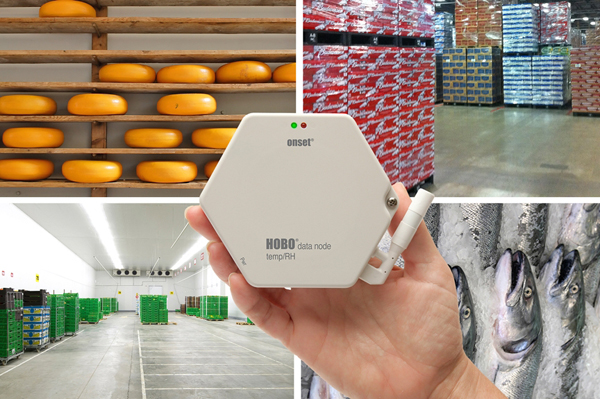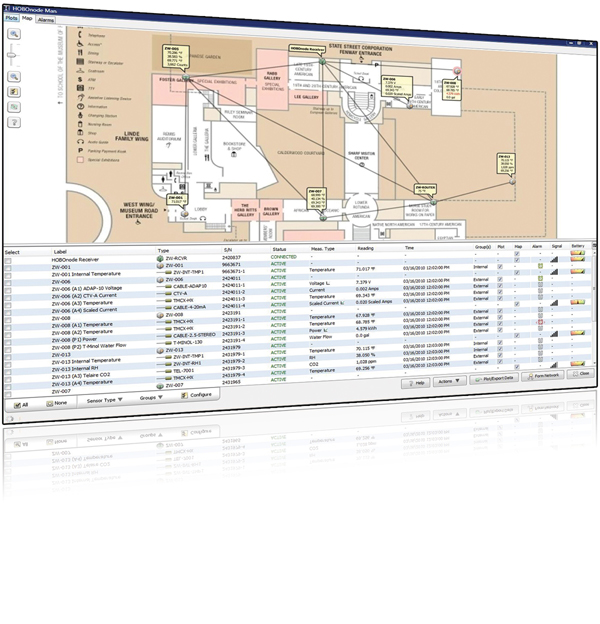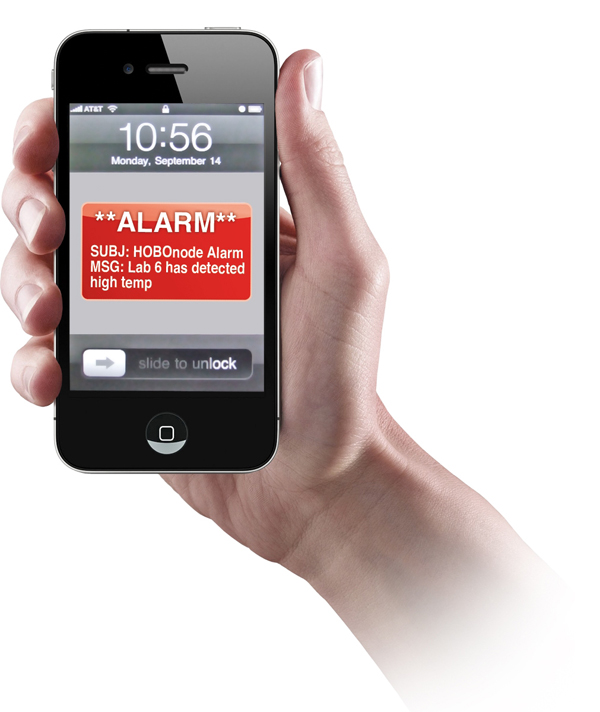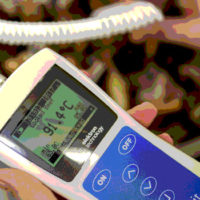Standalone data loggers have long been reliable workhorses for monitoring environmental conditions and energy efficiency in food and beverage manufacturing and storage facilities. However, collecting timely data from independent loggers distributed throughout large plant and warehouse facilities can present a number of challenges.
 Fortunately, a new generation of wireless data logging technology is helping food and beverage companies automate energy and environmental monitoring while enabling real-time data collection.
Fortunately, a new generation of wireless data logging technology is helping food and beverage companies automate energy and environmental monitoring while enabling real-time data collection.
This article provides an overview of wireless data node technology, discusses the benefits of real-time monitoring in production and warehousing facilities, and explains how food safety and facility management professionals can leverage the technology to lower monitoring costs, streamline recordkeeping for Hazard Analysis and Critical Control Points (HACCP) compliance, and help meet product quality objectives.
Understanding Wireless Data Nodes
Wireless data nodes, such as HOBO® ZW nodes from Onset, are compact, wireless sensing devices that transmit high-accuracy building data from dozens of points to a central PC located in the facility. Utilizing integrated and/or external sensors, data nodes measure a range of environmental parameters, such as air temperature, relative humidity and carbon dioxide. The wireless data logging devices can also measure a variety of energy and power parameters, including kilowatt hours, voltage and current.
Because data is automatically transmitted to a central PC, users do not need to manually retrieve and offload independent standalone data loggers placed throughout their facilities, or spend time taking spot measurements. This can save food and beverage companies considerable time and labor expense.
Wireless data nodes work in conjunction with wireless routers and a central receiver to form self-healing wireless networks within a facility. Routers provide connectivity to other data nodes and redirect recorded data back to the central receiver. The receiver is the central hub that collects and stores data from all data nodes out on a network and interfaces directly with the dedicated PC.
To help manage the network and incoming data, accompanying network management software is used. The software enables users to view energy and environmental data in graph or/or tabular form, set up alarm notifications, access trend log files and see a map view of their entire network.
 Certain software packages, such as Onset’s HOBOware® Pro, allow for data to be automatically sent at regular intervals to remote locations through FTP and email or to a local network folder. This can be useful, for example, in situations where temperature conditions at off-site warehouses need to be monitored. Users can access this data alongside their main facility’s data via an internal network.
Certain software packages, such as Onset’s HOBOware® Pro, allow for data to be automatically sent at regular intervals to remote locations through FTP and email or to a local network folder. This can be useful, for example, in situations where temperature conditions at off-site warehouses need to be monitored. Users can access this data alongside their main facility’s data via an internal network.
Streamlining HACCP Compliance
Wireless data nodes can help streamline recordkeeping for HACCP compliance. HACCP compliance calls for control of critical measurement points—temperature control to keep food safe as well as operational control. As such, compliant organizations can streamline their recordkeeping and HACCP compliance processes by establishing monitoring and verification procedures based on the use of wireless data nodes. The devices not only provide real-time data on current environmental conditions, but store trend log files that can be easily analyzed, documented and reported using accompanying software.
Wireless data nodes can also help with HACCP-related preventative maintenance strategies. For example, they can track runtimes on process equipment to let plant engineers know when preventative maintenance may be required, or verify that oven temperatures have maintained calibration. Users can also set up instant alarm notifications so they will be immediately notified of problems. For example, if temperature or humidity conditions exceed set thresholds, or if equipment experiences a loss of power, the event can trigger an alarm notification in the form of email, text message or audio/visual alarms on a PC. The user receives the notification and can immediately take corrective action.
 By providing instant notification of problems, wireless data nodes can help reduce production downtime, prevent potential equipment damage and help assure food safety and quality.
By providing instant notification of problems, wireless data nodes can help reduce production downtime, prevent potential equipment damage and help assure food safety and quality.
Beyond Environmental Monitoring
In addition to being used for a variety of environmental monitoring applications, wireless data nodes can help food and beverage organizations identify energy-saving opportunities. For example, they can be used to monitor equipment from boilers to refrigeration and production equipment to help facility managers understand the energy efficiency of each unit. AC voltage, power demand (kW) amd energy consumption (kWh) can be tracked to achieve better energy-efficiency. Data collected with wireless monitoring also allows facility managers to determine more cost-effective schedules for usage.
Conclusion
Whether a company needs to prevent temperature-related food damage, streamline reporting for compliance purposes or reduce energy costs, wireless monitoring is the road to improved quality control and more efficient plant and warehouse facilities. Wireless data nodes are able to transmit high accuracy energy and environmental measurements from dozens of points to a central PC. This eliminates the need to manually retrieve and offload individual standalone data loggers, saving time and money.
Evan Lubofsky is the director of marketing at Onset Computer Corporation. He can be reached at Evan_Lubofsky@onsetcomp.com.
Get our eMagazine delivered directly to your inbox
Stay in the know on the latest science-based solutions for food safety.
SUBSCRIBE TODAY!Copyright ©2024. All Rights Reserved BNP Media.
Design, CMS, Hosting & Web Development :: ePublishing



